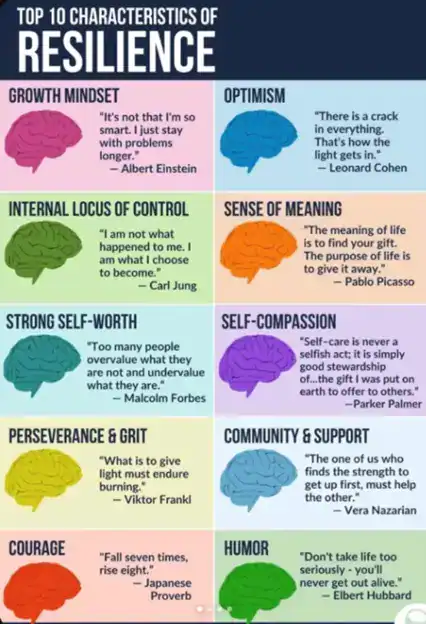Market cycles are inevitable. Disruption is a constant. A competitor’s breakthrough, an economic downturn, a global crisis—these aren’t anomalies; they are features of the modern business landscape.

In this environment, your strategy is your map, but resilience is your engine. It’s what allows you to navigate the terrain when the map becomes outdated.
The most resilient companies aren’t just lucky; they are led by resilient leaders who consciously build resilient teams. This isn’t about being tough; it’s about being adaptable, purposeful, and connected.
Let’s deconstruct the core characteristics of resilience, not as abstract virtues, but as the essential building blocks of a leader who can withstand pressure and lead their company to the other side of any crisis.
The Strategic Mindset: How You See the World
A leader’s framework for interpreting events dictates their response. Resilience begins with a conscious choice of perspective.
- Growth Mindset vs. Fixed Mindset: The resilient leader sees a setback as a data point, not a verdict. A product failure isn’t proof that the company is doomed; it’s a painful but invaluable lesson in the market. This mindset, as Einstein noted, is about staying with the problem, not just relying on initial smartness. It turns challenges into R&D for your strategy.
- Internal Locus of Control: This is the antithesis of victimhood. As Carl Jung implied, it’s the choice to define yourself by your agency, not your circumstances. The resilient CEO doesn’t waste energy blaming the market or regulators; they ask, “Given this new reality, what are my moves?” They focus their effort on the field of play they can actually influence.
- Sense of Meaning: Picasso’s quote points to a powerful truth: a compelling “why” is the ultimate shock absorber. When your work is tied to a purpose deeper than quarterly earnings—to find and give your “gift”—the inevitable hardships become part of a larger narrative. This meaning is the glue that holds your team together when the path gets hard.
The Personal Foundation: How You Manage Yourself
You cannot pour from an empty cup. Resilience requires a deep well of personal resources to draw from.
- Strong Self-Worth: As Malcolm Forbes highlights, this is about an accurate assessment of your own value. A leader with strong self-worth can accept criticism without crumbling and delegate confidently because their identity isn’t tied to being the smartest person in every room. This allows them to build teams that are stronger than the sum of their parts.
- Self-Compassion: This is perhaps the most underestimated leadership skill. It’s not self-pity; it’s strategic self-management, as Parker Palmer suggests. Pushing yourself to burnout is not a badge of honor; it’s poor stewardship of your company’s most critical asset—its leader. Granting yourself grace during a failure allows for a faster, clearer-headed recovery.
- Humor: Elbert Hubbard’s advice is profound. The ability to not take yourself too seriously is a pressure release valve. It provides perspective, reminding you and your team that while the work is critical, the world will not end because of a single missed quarter. It humanizes you and makes the burden of leadership sustainable.
The Action & Connection: How You Engage with the World
Finally, resilience is not a solitary endeavor. It is expressed through persistent action and built on a foundation of support.
- Perseverance & Grit: This is the relentless execution of your strategy, adjusted for new learnings. Viktor Frankl, who survived the ultimate test of resilience, understood that enduring the “burning” is often the price of giving light. In business, this is the daily commitment to showing up and moving forward, even when progress is invisible.
- Courage: The Japanese proverb “Fall seven times, rise eight” isn’t about never falling; it’s about the commitment to getting up one more time than you’re knocked down. This is the courage to make the unpopular decision, to pivot the strategy, or to re-enter a market after a failure.
- Community & Support: No CEO is an island. As Vera Nazarian writes, resilience is a team sport. The leader who pretends to have all the answers is fragile. The resilient leader builds a trusted inner circle—a board, an exec team, fellow CEOs—who can offer perspective, challenge their thinking, and help them “get up” when they stumble.
The Resilient Organization is a Reflection of its Leader
Your company’s culture will mirror your own resilience. By consciously cultivating these ten characteristics within yourself, you don’t just become a stronger leader.
You build an organization that learns faster, adapts more readily, and endures longer. You build a company that doesn’t just survive the storms but learns to dance in the rain. In the end, resilience isn’t about avoiding the fire; it’s about learning how to forge steel within it.

